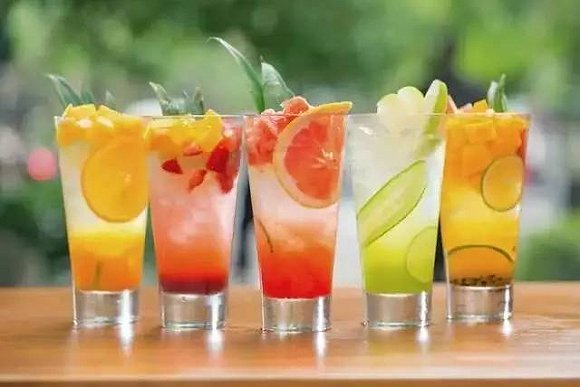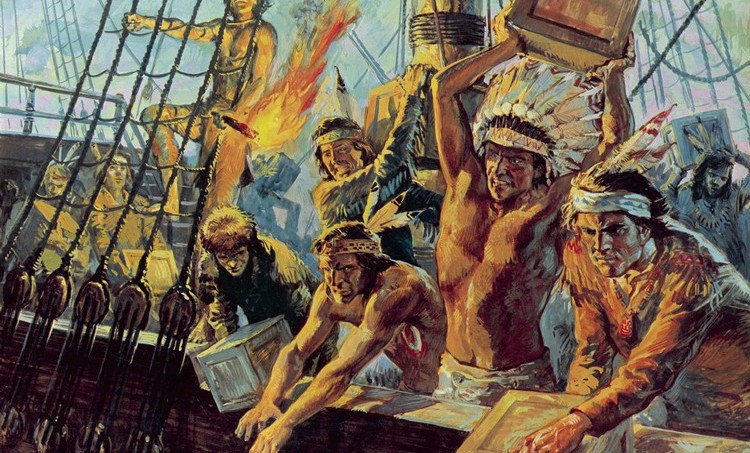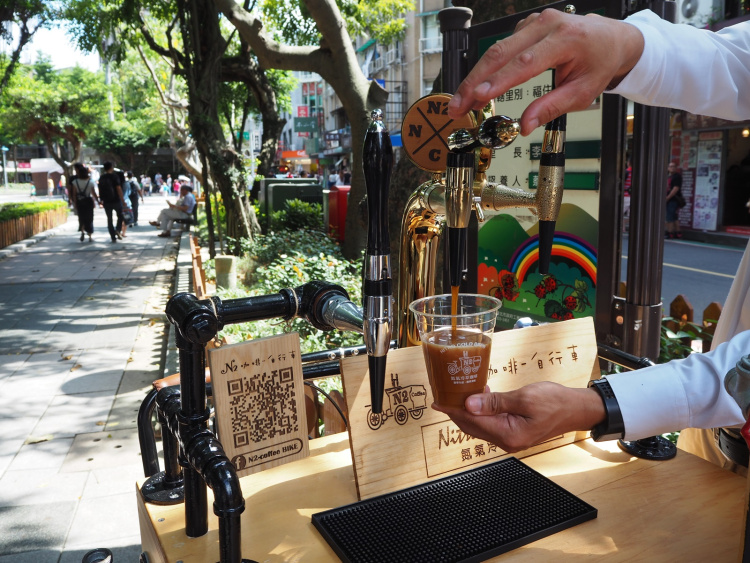Quality hall, carving time to sell "tea", where is the boundary between cafes and tea shops?
For professional baristas, please follow the coffee workshop (Wechat official account cafe_style)

All along, coffee and tea have always been like two separate individuals.
Now, no matter in terms of products or space, they gradually become more and more "like" and seem to be converging.
But where is the boundary between a coffee shop and a tea shop?
Ka Men | Erma, from Shanghai
one
You sell tea in a professional cafe?
Recently, quality Coffee and carving time Cafe quietly launched two new "different" products, namely fruit tea and milk cover tea.

▲ quality Museum joined hands with Ma Xiansheng's "Fruit Ice Tea"

"Cherry Blossom Rock Salt Cheese cover Tea" developed by ▲ carving time
Do you sell tea in a professional cafe? In fact, they are no longer a precedent.
Starbucks has long been selling tea-containing drinks, such as its matcha latte, introduced Teavana last year, and recently added "matcha" and "black tea" to its bottled drinks.
In addition, with much fanfare, CoCo Duke Milk Tea Store, which has opened more than 500 "Coco Caf é", has re-launched coffee drinks and hanging-ear coffee, and has even recently made a fuss on the spatial experience, dedicated to coffee drinking areas-coffee has become more elemental. (portal: why is the area of the tea shop getting bigger and bigger from the stall shop to 100 yuan? )

Freshly ground coffee reproduced by ▲ CoCo with milk tea
From the product point of view, cafes and tea shops show a trend of "integration".
Not only that, tea shops are also moving closer to cafes in terms of equipment and appliances that consumers can't see. For example, hand drip filter pots, ice drop containers and capsule machines are all used to make tea, while steampunk, a semi-automatic machine that can be easily seen in modern tea shops, can also make both coffee and tea.
Coffee and tea are quite different in natural structure, but Luo Jun, the founder of tea and book flavor, once had a view: in drinks, tea and coffee themselves are the base, and the products developed are actually mixed products. (portal: Starbucks' new products are complained of "smelly feet". Why is coffee innovation so difficult? )
two
Cafes and tea shops are becoming more and more alike.
The integration of cafes and tea shops is more obviously reflected in space.
In today's new-style tea, whether it is online celebrity tea or newly opened unknown tea shops, as long as they "boast" new-style tea, they will consciously "keep up" with the cafes in terms of store design.
They are no longer small stalls on street corners: small in size and simple and rough in design. Instead, it is sensitive to design, taking the route of "freshness and simplicity", upgrading and iterating from environmental hue, furniture style, staff uniform, logo design and other aspects, just like the new fashion youth image born in the teahouse with old decoration.



▲ from image to experience, the environmental pressure is getting higher and higher.
The 100-square-foot space is also expanding the consumption scene and changing the way young people drink milk tea-in addition to "buy and go", they can also have leisure and entertainment in the store, or even date and work, which seems to have the same function as the "third space" of the cafe.
In addition, tea shops are also strong into large shopping mall and other commercial real estate, stirring up a new round of changes in shopping malls.
In these senses, the new tea shop puts itself on the same competitive dimension as the coffee shop.
three
Establish a clear brand clarity
But for a long time, there was a clear line between cafes and tea shops, and even in the caf é door, the two were chatted together very few times.
Now, the line between the two is becoming more and more blurred. Where on earth should the line representing the boundary be drawn?
Generally speaking, if a brand can not be clearly defined, but only affixed with some unknown "innovation" and "integration" label, it is very difficult for consumers to remember.

▲ is like Guanjuer, whose character is not clear enough in Ode to Joy.
The impression left on the audience is the weakest in the five Beauties.
A classic failure in the fast food industry is Yum's Oriental White, which was once known as the "KFC Brothers Brand" so that consumers have no idea what it is about for a long time.
"Integration" helps to open up a larger market. For example, new tea brands let tea drink get rid of the obsolescence of the past, and are more and more accepted and liked by young people, while the introduction of tea in cafes also gives those who are not used to coffee an additional choice.
But if you want to establish your competitiveness in the market, a clear brand clarity is still very important. Starbucks still plays an exemplary role in this regard.
Although it has launched a variety of innovative drinks in recent years, including alcohol and tea in markets such as the United States and Japan, it has vigorously developed Teavana in the past two years, eventually making up half of the total number of non-coffee drinks.

▲ but in its stores, the "COFFEE" in logo is still very conspicuous.
However, Starbucks' clear coffee attribute and identity have not been shaken, and it focuses on the stack of brand power, whether it is external publicity, the shaping of corporate culture, or the definition of its own label, it is always "coffee". It knows very well what occupies the minds of consumers behind the word "Starbucks".
Imagine what kind of relationship do you think will exist between cafes and tea shops in the future?
-End-
Important Notice :
前街咖啡 FrontStreet Coffee has moved to new addredd:
FrontStreet Coffee Address: 315,Donghua East Road,GuangZhou
Tel:020 38364473
- Prev

Boston forgotten by the third wave of coffee may sprout a quiet revolution of coffee
Professional baristas follow the Coffee Workshop (official Wechat account cafe_style) the third wave of coffee swept across the United States, and big cities on the northwest corner now have famous coffee shops like San Francisco, Portland, or Seattle. The wave is also spreading from the west coast to the east coast. But in this coffee revolution, Boston, the birthplace of the American independence revolution, seems to be completely different.
- Next

How does cold coffee, which is favored by Starbucks, change the coffee business?
Professional baristas follow the coffee shop (Wechat official account cafe_style). The summer season is crucial for any company associated with beverages. Gregorys Coffee, a cafe in New York, has been monitoring temperature changes since May, gradually changing menus. Usually 75% of the coffee in this shop is hot and 25% is cold. To the hottest
Related
- What documents do you need to go through to open a coffee shop? coffee shop coffee shop certificate processing process
- How to purchase Coffee beans in small Cafe how to choose a suitable supplier for domestic Coffee supply Company
- How to drink Starbucks Fragrance White Coffee? how to make Australian White Coffee? what Italian coffee beans are recommended?
- The Story of Flora Coffee: the name of Flora Coffee Bean and the implication of the Flowers on Florna Coffee
- How much does a cup of coffee cost? How much is the profit of a cup of coffee? What is the profit of the coffee shop in a year?
- Yunnan small Coffee, known as "fragrant Coffee", introduces the characteristics of Alpine Arabica Coffee producing areas in Yunnan, China
- 2023 latest Starbucks full menu price list how much is a cup of Starbucks coffee what is better to drink the most popular hot and cold drinks recommended
- Starbucks different kinds of Coffee Price list Starbucks menu 2023 Top Ten Best drinks in Starbucks
- Starbucks Spring praise Comprehensive matching Coffee Bean theme Story Packaging implication and taste description
- The cost of a cup of coffee latte American coffee cost price and selling price

